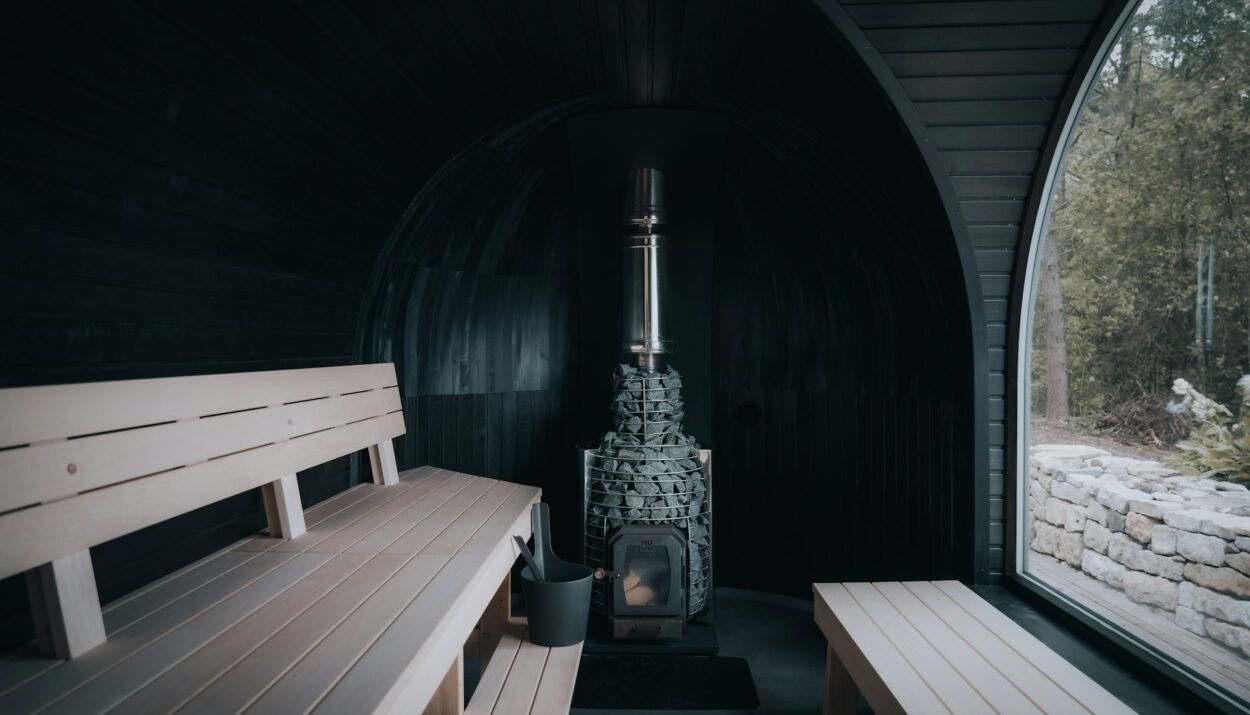Your home should be more than four walls and furniture—it should serve as a refuge from life’s constant demands. While many focus on aesthetic appeal, creating truly restorative living spaces requires understanding the deeper relationship between environment and wellbeing. The spaces we inhabit have profound effects on our stress levels, sleep quality, and overall mental health.
The concept of interior wellness extends beyond trendy design elements or expensive renovations. It involves thoughtfully crafting environments that actively support your physical and emotional needs. This approach to home design recognizes that calming interiors can serve as powerful tools for daily restoration and long-term wellness.
Research consistently shows that our physical environments directly impact our psychological state. Natural light affects circadian rhythms, colors influence mood, and spatial organization can either promote or hinder relaxation. By applying these principles intentionally, you can create a self-care space that works as hard as you do to maintain your wellbeing.
Understanding the Connection Between Space and Wellness
The Psychology of Healing Environments
Environmental psychology demonstrates that certain design elements trigger specific psychological responses. Soft textures, warm lighting, and natural materials activate the parasympathetic nervous system, which governs rest and recovery.
This biological response explains why some spaces immediately feel calming while others create subtle tension.
Color psychology plays a particularly important role in interior wellness. Blues and greens promote tranquility and reduce cortisol levels, while earth tones create feelings of stability and grounding.
Understanding these connections allows you to make deliberate choices that support your emotional needs rather than simply following design trends.
Spatial organization also affects mental clarity and stress levels. Cluttered environments overwhelm cognitive processing, while thoughtfully organized spaces promote focus and calm.
This principle extends beyond mere tidiness to encompass how furniture placement, storage solutions, and traffic flow either support or hinder daily routines.
Biophilic Design Principles for Home Wellness
Biophilic design recognizes our innate connection to nature and incorporates natural elements to improve well-being. This approach goes beyond adding houseplants to include natural materials, organic shapes, and connections to outdoor environments.
Research shows that biophilic elements can reduce stress hormones by up to 15% within just five minutes of exposure.
Natural light serves as the foundation of biophilic design. Maximizing daylight exposure helps regulate sleep-wake cycles, improves mood, and supports vitamin D production.
Strategic window treatments, mirrors, and light-colored surfaces can amplify available natural light without sacrificing privacy or comfort. Water features, natural textures, and living plants create multi-sensory experiences that ground us in the present moment.
The sound of flowing water masks urban noise while providing acoustic comfort. Natural textures like wood grain, stone surfaces, and woven fibers offer tactile variety that synthetic materials cannot replicate.
Creating Calming Interiors Room by Room
Designing Restorative Bedrooms
The bedroom serves as your primary recovery space, making it crucial for interior wellness. Sleep quality directly impacts immune function, emotional regulation, and cognitive performance.
Creating calming interiors in this space requires attention to light control, temperature regulation, and sensory comfort. Blackout solutions extend beyond heavy curtains to include eliminating electronic light sources and reflective surfaces that scatter ambient light.
Cool temperatures between 65-68°F optimize sleep quality, while breathable natural fibers in bedding and pajamas prevent overheating. Soft, layered lighting allows for a gradual transition from activity to rest.
Sound management often gets overlooked in bedroom design. Soft furnishings absorb noise, while strategic placement of furniture can block disruptive sounds.
White noise machines or fans create consistent acoustic environments that mask intermittent disturbances without requiring electronic devices near the bed.
Living Spaces That Encourage Relaxation
Living areas serve multiple functions, making thoughtful zoning essential for interior wellness. Creating distinct areas for different activities—reading, socializing, relaxing—allows the space to adapt to various needs while maintaining overall harmony.
This approach prevents the overstimulation that occurs when spaces try to serve too many purposes simultaneously. Comfortable seating arrangements that encourage face-to-face conversation support social wellness and reduce reliance on digital entertainment.
Soft lighting options, including table lamps and floor lamps, create intimate atmospheres that promote relaxation and meaningful connection. Avoiding overhead lighting during evening hours supports natural circadian rhythms.
Storage solutions that keep everyday items accessible but organized prevent visual clutter from creating subconscious stress. Beautiful containers, built-in shelving, and multipurpose furniture maintain the peaceful atmosphere while supporting daily functionality.
Kitchen Wellness and Mindful Cooking Spaces
The kitchen often serves as the heart of the home, making it an important focus for interior wellness.
Spaces that encourage mindful food preparation and enjoyable meals support both physical and emotional health. Good ventilation, adequate lighting, and organized storage transform cooking from a chore into a meditative practice.
Natural materials like wood cutting boards, stone countertops, and ceramic containers connect us to the sensory aspects of food preparation.
These elements age beautifully and provide tactile pleasure that plastic alternatives cannot match. Herb gardens on windowsills or countertops bring living elements into daily cooking routines.
Comfortable seating areas within or adjacent to the kitchen encourage lingering over meals and meaningful conversation. This supports digestive health and family connection while creating positive associations with nourishment and home.
Establishing Your Personal Self-Care Space
Identifying Your Wellness Needs
Creating an effective self-care space begins with an honest assessment of your specific needs and preferences. Some people require complete silence for restoration, while others find gentle background sounds soothing.
Understanding your sensory preferences, energy patterns, and stress responses guides design decisions that truly support your wellbeing.
Consider how you naturally seek comfort during difficult times. Do you gravitate toward cozy enclosed spaces or prefer open areas with views?
Do you find peace in organized minimalism or comfortable abundance? These preferences reveal important information about what elements will make your self-care space genuinely restorative.
Time of day preferences also influence design choices. Morning people might prioritize eastern light and energizing colors, while evening relaxers benefit from western exposures and calming tones. Aligning your space with your natural rhythms amplifies its wellness benefits.
Incorporating Personal Meaningful Elements
An authentic self-care space includes items with personal significance rather than generic wellness accessories.
Family photographs, treasured books, inherited textiles, or handmade pottery create emotional connections that mass-produced items cannot provide. These meaningful objects serve as anchors during stressful periods.
Cultural and spiritual elements that resonate with your background or beliefs add depth to your self-care space. This might include specific colors, symbols, scents, or textures that connect you to important traditions or personal practices.
Honoring these connections strengthens the space’s ability to provide comfort and restoration. Natural collections like shells, stones, or pressed flowers create personal connections to peaceful experiences and beautiful places.
Unlike purchased decorations, these items carry specific memories and emotional associations that enhance their calming effects.
Designating Technology-Free Zones
Creating boundaries around technology use supports interior wellness by preserving spaces for genuine rest and reflection.
Bedrooms without televisions or charging stations promote better sleep hygiene and an intimate connection. Reading nooks without wifi access encourage deep focus and mental restoration.
Physical barriers like beautiful boxes or drawers for storing devices create intentional steps that prevent mindless scrolling or constant connectivity. This approach maintains access to technology when needed while protecting designated wellness time and space.
Alternative activities become more appealing when technology isn’t readily available. Books, journals, art supplies, musical instruments, or puzzle collections provide engaging options that support different aspects of mental and emotional well-being.
Maximizing Natural Elements for Healing
Strategic Plant Placement for Air Quality and Mood
Indoor plants serve multiple wellness functions beyond visual appeal. Snake plants and peace lilies actively purify air while requiring minimal maintenance. Larger plants like fiddle leaf figs or rubber trees create dramatic focal points while significantly improving air quality in smaller spaces.
Grouping plants of varying heights and textures creates micro-ecosystems that provide both visual interest and enhanced air purification.
This approach mimics natural environments while allowing flexibility as plants grow and your preferences evolve. Seasonal rotation keeps plant arrangements fresh and engaging.
Edible plants like herbs, microgreens, or small vegetables connect daily wellness practices with food preparation. The act of tending these plants provides gentle physical activity and mindful focus, while fresh herbs enhance both nutrition and flavor in home cooking.
Natural Light Optimization Techniques
Maximizing available natural light requires strategic use of reflective surfaces, light-colored materials, and thoughtful window treatments.
Mirrors positioned to reflect daylight deeper into rooms can significantly brighten interior spaces without requiring structural changes. Light-colored walls, ceilings, and floors amplify existing light while creating more spacious feelings.
Window treatments that provide privacy while preserving light access support both wellness and practical needs. Sheer panels, top-down, bottom-up shades, or adjustable louvers allow customization throughout the day.
These solutions prevent the all-or-nothing approach that forces choosing between privacy and natural light. Skylights, solar tubes, or additional windows may be worth considering for spaces that receive limited natural light.
These improvements often provide significant wellness benefits while adding property value. Even small changes like trimming outdoor vegetation or cleaning windows can dramatically improve interior light quality.
Incorporating Natural Materials and Textures
Wood, stone, bamboo, and other natural materials provide visual warmth while offering unique textural experiences that synthetic alternatives cannot replicate.
These materials age gracefully, developing character and patina that adds to their appeal over time. Their inherent variations create visual interest without requiring complex design schemes.
Natural fiber textiles like cotton, linen, wool, and silk provide breathability and comfort while avoiding the static and synthetic feel of petroleum-based materials. These fibers regulate temperature and moisture naturally, contributing to physical comfort and better sleep quality.
Layering different natural textures creates rich sensory experiences that engage multiple senses simultaneously. Smooth stone surfaces, rough-hewn wood, soft wool throws, and cool metal accents provide tactile variety that keeps spaces interesting and engaging.
Practical Implementation Strategies
Budget-Friendly Wellness Improvements
Interior wellness doesn’t require expensive renovations or designer furniture. Simple changes like rearranging existing furniture to improve traffic flow or maximize natural light can significantly impact how a space feels and functions.
Deep cleaning, decluttering, and organizing existing belongings often reveals the bones of beautiful, calming spaces.
Thrift stores, estate sales, and online marketplaces offer access to natural materials and quality furnishings at affordable prices.
Vintage wood furniture, ceramic vessels, and natural fiber textiles can be found for a fraction of retail costs while providing character and authenticity that new items lack.
DIY projects like painting walls in calming colors, creating simple window treatments, or refinishing existing furniture allow personalization while building skills and saving money.
These projects often provide meditative benefits during creation while resulting in customized solutions that perfectly fit your space and needs.
Gradual Implementation for Lasting Change
Sustainable interior wellness improvements happen gradually rather than through dramatic overnight transformations. Starting with one room or even one corner allows you to experience the benefits of changes while learning what works best for your lifestyle and preferences.
Seasonal updates provide natural opportunities to refresh wellness elements without overwhelming your space or budget.
Spring might bring new plants and lighter textiles, while fall introduces warmer colors and cozy textures. This approach keeps your environment fresh while honoring natural rhythms.
Living with changes for several weeks before making additional modifications allows you to understand their true impact on your daily experience. Some improvements that seem appealing in theory may not work practically, while others might exceed expectations and inspire further similar changes.
Maintaining Your Wellness Environment
Regular maintenance preserves the wellness benefits of your carefully designed spaces. This includes obvious tasks like plant care and cleaning, but also subtle adjustments like rotating seasonal decorations, refreshing scents, or updating reading materials.
These small attentions keep your space feeling intentional and cared for. Periodic reassessment ensures your space continues serving your evolving needs.
Life changes, new interests, or shifting schedules might require adjustments to maintain optimal function and wellness support. Flexibility prevents your space from becoming static or losing its ability to provide genuine restoration.
Creating simple daily rituals around space maintenance—making beds, opening curtains, watering plants—provides gentle structure while maintaining the environment you’ve created. These small acts of care for your space often become acts of self-care that start or end your day with intention.
Nurturing Your Personal Sanctuary
Creating spaces that truly heal requires moving beyond surface aesthetics to understand the deeper connections between environment and wellbeing.
Your home’s ability to serve as a sanctuary depends not on expensive furnishings or perfect design, but on thoughtful attention to how spaces support your specific needs and natural rhythms.
The journey toward interior wellness is deeply personal and evolving. What creates calm for one person might feel sterile to another.
The key lies in honest self-reflection about what truly supports your wellbeing, combined with a willingness to experiment and adjust as you learn more about your responses to different environments.
Start where you are, with what you have, making small changes that align with your authentic preferences rather than external expectations.
Your personal sanctuary will emerge through this process of attentive care and gradual refinement, creating a home that actively supports your health and happiness for years to come.




